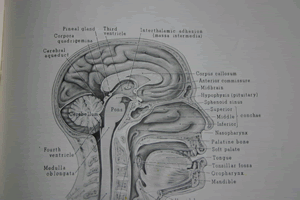 May A. Beydoun 5,*,
May A. Beydoun 5,*,
Marie T. Fanelli Kuczmarski 6,
Hind A. Beydoun 7,
Joseph R. Hibbeln 8,
Michele K. Evans 5, and
Alan B. Zonderman 5
First published September 4, 2013, doi: 10.3945/jn.113.179119 J. Nutr. September 4, 2013 jn.113.179119
+ Author Affiliations
5 National Institute on Aging, Intramural Research Program, NIH, Baltimore, MD
6 Department of Behavioral Health and Nutrition, University of Delaware, Newark, DE
7 Graduate Program in Public Health, Eastern Virginia Medical School, Norfolk, VA; and
8 Nutritional Neurosciences Section, National Institute of Alcohol Abuse and Alcoholism, Intramural Research Program, NIH, Bethesda, MD
↵*To whom correspondence should be addressed. E-mail: baydounm@mail.nih.gov.
Abstract
Evidence that depressive symptoms are inversely related to n–3 (ω3) fatty acids is growing among United States adults.
We assessed whether self-reported depressive symptoms were inversely associated with n–3 fatty acid intakes by using a cross-sectional study in 1746 adults (aged 30–65 y) in Baltimore City, MD (2004–2009).
The 20-item Center for Epidemiologic Studies–Depression Scale (CES-D) was used, with a CES-D score ≥16 suggestive of elevated depressive symptoms (EDS).
By using the mean of two 24-h dietary recalls, n–3 highly unsaturated fatty acids (HUFAs; ≥20 carbons), n–3 polyunsaturated fatty acids (PUFAs; ≥18 carbons), and plausible ratios with n–6 (ω6) fatty acids were estimated.
EDS prevalence was 18.1% among men and 25.6% among women.
In women, the uppermost tertile (tertile 3) of n–3 PUFAs (compared with tertile 1) was associated with reduced odds of EDS by 49%, with a substantial sex differential.
The n–3 PUFA:n–6:PUFA ratio was inversely related to EDS among women (tertile 2 vs. tertile 1, OR: 0.74; 95% CI: 0.41, 1.32; tertile 3 vs. tertile 1, OR: 0.47; 95% CI: 0.27, 0.83).
A similar pattern was noted for n–3 HUFA:n–6 HUFA among women.
For CES-D subscales, n–3 PUFA (% of energy) was inversely related to somatic complaints, whereas positive affect was directly related to n–3 HUFA (% of energy; total population and among women), n–3 HUFA:n–6 HUFA (women), and n–3 HUFA:n–6 PUFA (total population and among women).
In sum, among United States women, higher intakes of n–3 fatty acids [absolute (n–3) and relative to n–6 fatty acids (n–3:n–6)] were associated with lower risk of elevated depressive symptoms, specifically in domains of somatic complaints (mainly n–3 PUFAs) and positive affect (mainly n–3 HUFAs).
Footnotes
↵1 Supported by the National Institute on Aging, Intramural Research Program (NIA/NIH/IRP).
↵2 Author disclosures: M. A. Beydoun, M. T. Fanelli Kuczmarski, H. A. Beydoun, J. R. Hibbeln, M. K. Evans, and A. B. Zonderman, no conflicts of interest.
↵3 Supplemental Figure 1 and the Supplemental Text 1 are available from the “Online Supporting Material” link in the online posting of the article and from the same link in the online table of contents at http://jn.nutrition.org.
↵4 M.K.E. and A.B.Z. were co–senior authors.


